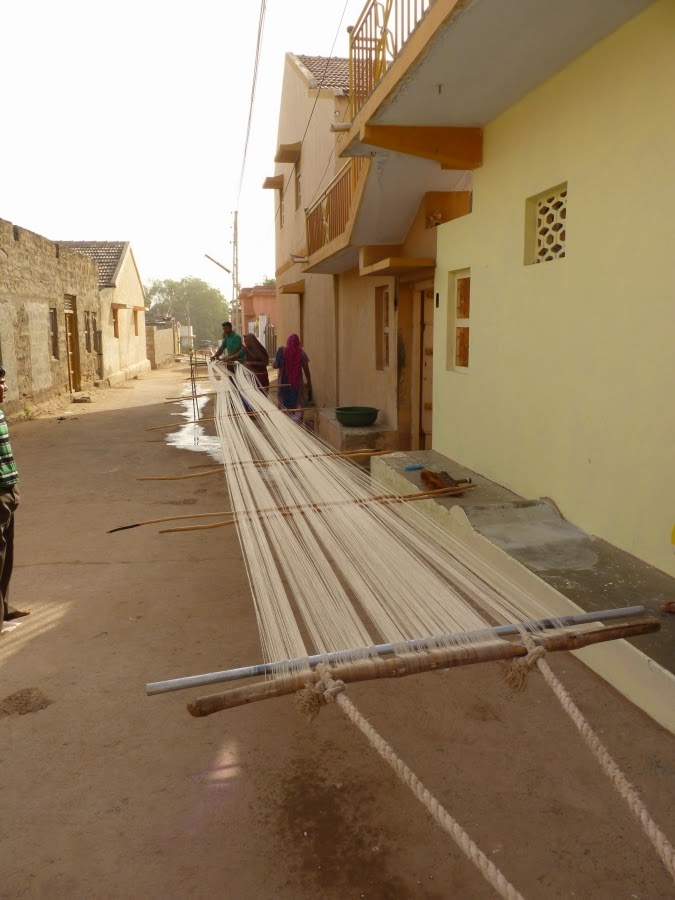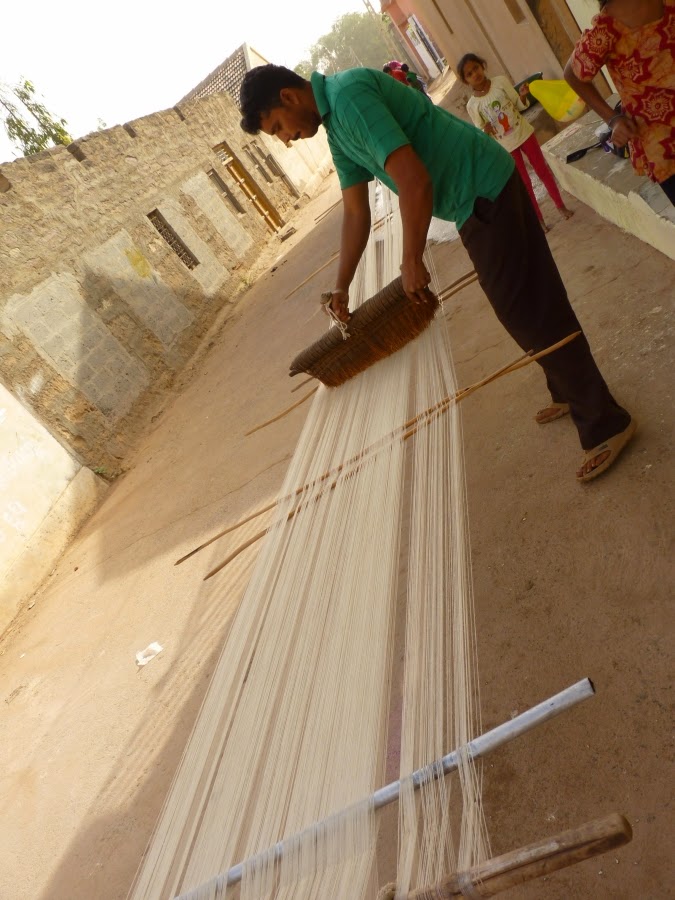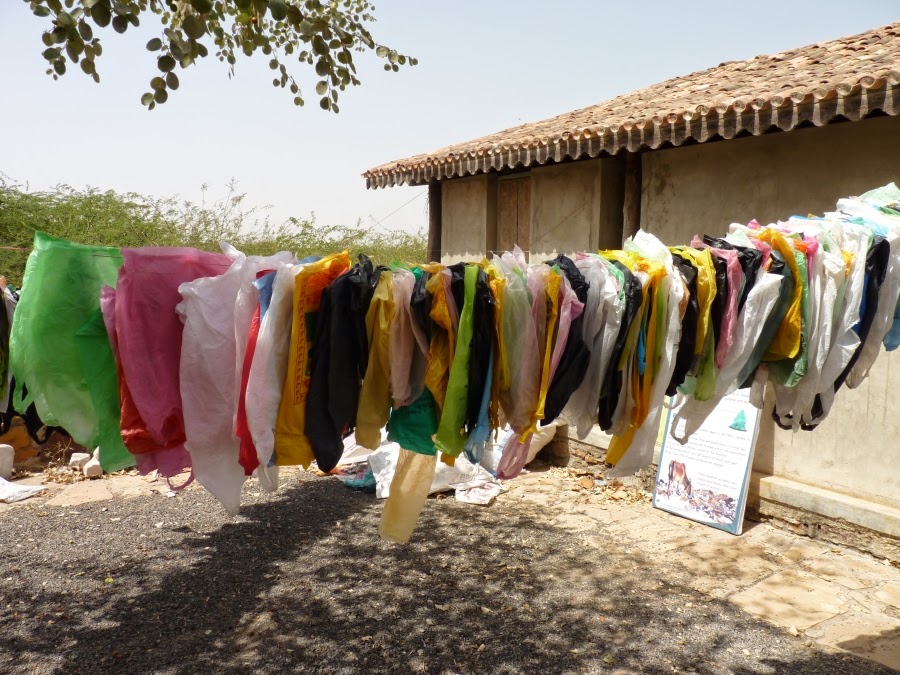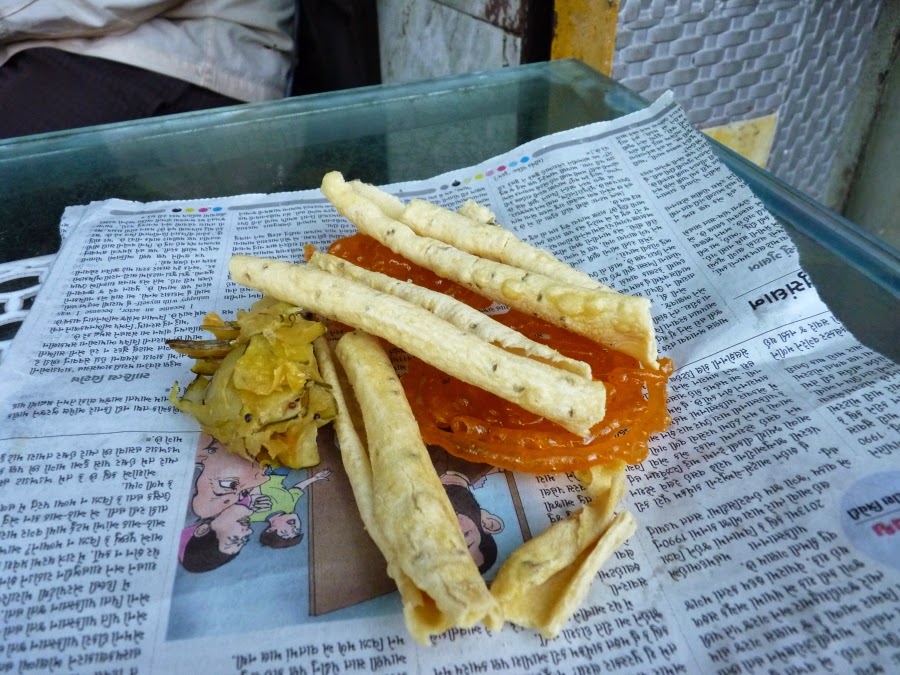 |
| On my first day in Kutch I met Narayan bhai, the weaver. His serene face and soft spoken nature was striking. |
 |
| At Hiramani Crafts Park, Bhujodi, this artisan crafts footwear out of camel hide. |
 |
| Wares ready to sell. |
 |
| Another store for bells, each producing a different sound. |
 |
| A pigeon house at Hiramani Crafts park. |
 |
| Cows on a rampage at Bhujodi. I've never seen such active and fast cows!! |
 |
| At Ajrakpur, where I spent a couple of hours, the block printed cloth pieces are left to dry in the sun. The sunnier it is the better the colours stand out. That day unfortunately it was cloudy. |
 |
| Wooden blocks with different patterns used for block printing |
 |
| And some more.... |
 |
| natural indigo dye in the bucket |
 |
| The natural ingredients used for making natural dye...henna, dried marigold flowers, indigo, etc.. |
 |
| The chart for natural dyes... |
 |
| Cloth pieces waiting to be printed on |
 |
| Printed and dried and ready to be shipped and sold. |
 |
| The process of dyeing the cloth...Here they were dyeing it with red. |
 |
| The master block printer, Dr. Ismail even received an honorary Ph.D for his art. |
 |
| At Bhujodi, in Ashok bhai's house, bundles of thread are bought by the kilo from Ludhiana..This one is merino wool thread.. |
 |
| Separating the strands of thread so that it doesn't get entangled. |
 |
| A closer look.. |
 |
| Water being boiled for the starch.. |
 |
| The starch used is that from wheat.. |
 |
| The separated thread is then dipped into the starch.. |
 |
| The entire length of the thread.. |
 |
| The drying process starts early in the morning to benefit maximum from the sun.. |
 |
| The whole family gets busy with the drying process.. |
 |
| The threads are then combed to separate the strands again.. |
 |
| The dried and starched thread is then spun onto a bobbin which is then used on the loom |
 |
| At Khamir, Prof. R.S. Bisht, the chief Archaeologist, who led the excavation at Dholavira, at the ruins of the Indus Valley civilization gave a 2 hour presentation on the pottery of the era. |
 |
| Such exquisite designs. Some patterns are used till this date. |
 |
| The extent of the Indus valley civilization. |
 |
| I loved the motifs of the fish especially and used it in my wall-art at Khamir |
 |
| Sipping tea while reading. The Kindle lacks the romance of a regular book! |
 |
| ...and while sketching... |
 |
| Clay cups waiting to be baked...I picked up one and it was so cool to touch. |
 |
| The potter at Khamir kneading the clay to moisten it.. |
 |
| The elephant and mahout made of clay. |
 |
| The pottery exhibit at Khamir |
 |
| The designs with black and white are called 'slips' which are painted using watered down clay and painted before the pots and pans are baked. |
 |
| The kiln using for baking..the temperature can be set between 400 to 1500 degrees Celsius depending on the type of clay and the product. |
 |
| At Khamir they do plastic weaving to recycle them. Plastic bags are washed and dried .... |
 |
| The dried bags are then cut into thin strips and woven on looms and then stitched into bags, mats, etc. |
 |
| At Khamir, the ready shawls and stoles are immersed in water to wash away the starch. |
 |
| Quality check for the ready stoles.. |
 |
| Look at this cute tailor bird peeping out from the nest. |
 |
| The puppy at Khamir sun-bathing. |
 |
| Had heard so much about the fafda-jalebi combination.Finally tried it at Bhuj :-) |










